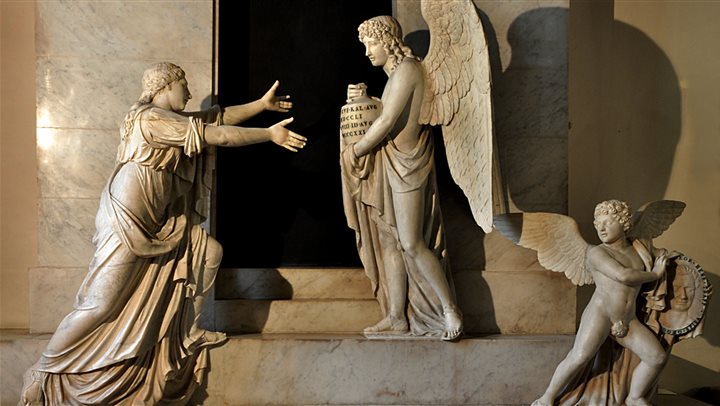Chiesa Evangelica Luterana
The building of this church, conceived by architect Christian Zimmermann of Wroclaw, started in 1871 in an area that had been occupied by saltworks and then reinforced with the sinking of over 200 wood poles.
The work was entrusted to architects Giovanni Berlam and Giovanni Scalmanini, who completed it in 1874.
For its clear neo-Gothic style it represents a fascinating "unicum" within the framework of the varied architectural heritage of the city with its spires and pinnacles, its slate sloping roofs, its high bell tower (49 m) covered in Karst's limestone. It was probably inspired by the Votivkirche of Wien, designed by Heinrich von Ferstel.
The original 3 bells (2 of which were seized during WWI) were melted by the workshop of Wiener Neustadt with the bronze of the French cannons confiscated by the Prussians in Sedan (1870) and donated by Emperor William I.
The church is divided into three aisles and there are neither decorations nor frescoes, in accordance with the Lutheran tradition. The light filters through the high ogival windows and from the central glass window of the apse, realized by the Zettler company of Munich, which depicts the "Transfiguration of Christ" (inspired by the famous painting of Raphael), a gift of the Rittmeyer family.
The wooden altar and pulpit -both works of the artistic carpenter Buhl of Wroclaw- are worthy of admiration, as well as the mechanical organ built by the Steinmeyer company of Alt Oettingen in Bavaria and very much appreciated by the naturalist Julius Kugy (1858 - 1944).
Of the two original funeral monuments in neoclassical style coming from the previous place of worship, the "Chiesa del Rosario" (Rosary Church) owned by the community from 1781 to 1871 and realized by Antonio Bosa, a pupil of Canova, there remains only the monument dedicated to Georg Heinrich Trapp (a stockbroker) in the left aisle, while the other monument was destroyed by an act of vandalism and there remains only a commemorative plaque designed by Pietro Nobile, and dedicated to the Danish consul Johan Heinrich Dumreicher.
The Lutheran community has been living in Trieste since the creation of the free port (1719). In 1784 it counted almost 1200 members, who became 1700 in the early 1900s and decreased to 120 after the two World Wars.
In almost three centuries of stay in Trieste it played an important role in the history of the city, particularly in the financial and insurance sectors, promoting also many social initiatives (schools, athletic and voluntary associative activities, a hospice, the Rittmeyer Institute for blind people, the SOGIT (Soccorso Ordine di S. Giovanni - Order of Saint John's Rescue).






